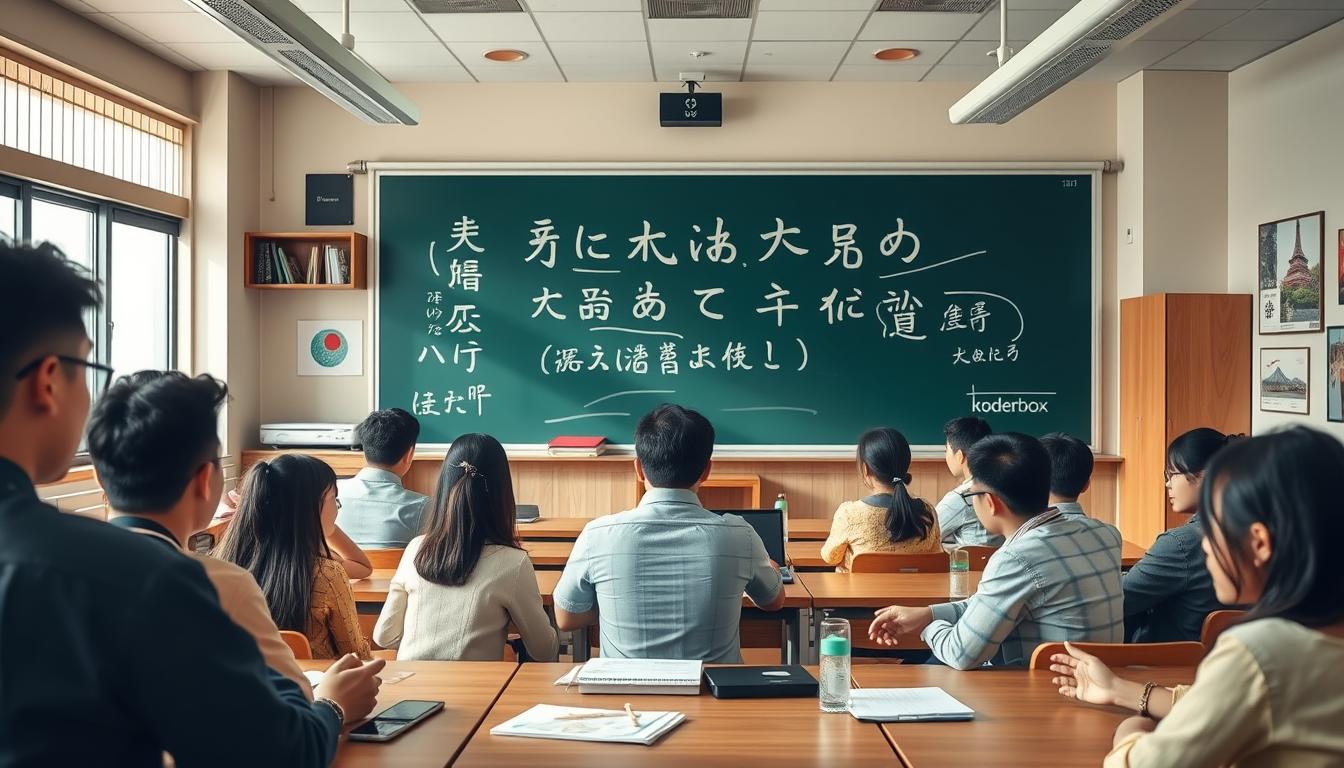Did you know the best way to learn Japanese fast isn’t what most language schools teach? Surprisingly you can actually master it in just a few days with effective methods. Many learners assume Japanese is overwhelmingly difficult, however, certain aspects are simpler than English – Japanese has only two tenses (past and non-past) instead of our complex tense system. Despite taking Japanese children approximately 18 years to learn all 2,136 official kanji, foreigners can accelerate this process dramatically by learning vocabulary and kanji simultaneously. If you’re wondering how to learn Japanese fast, the secret lies in combining structured learning with immersion. We’ve discovered that setting SMART goals (Specific, Measurable, Achievable, Relevant, and Time-bound) significantly enhances progress and maintains motivation throughout your learning journey. Additionally, for those figuring out how to learn Japanese by yourself, utilizing varied techniques like language apps, Japanese TV shows, and podcasts creates a comprehensive learning environment. In this article, I’ll share the proven method to help you master Japanese efficiently – without getting lost in textbooks or burning out after the initial excitement fades. Let’s dive into the approach that will transform how you learn this fascinating language! Start with the Japanese Alphabet The Japanese writing system might look intimidating at first glance, but breaking it down into logical steps makes learning far more manageable. Unlike European languages that use a single alphabet, Japanese employs three writing systems – hiragana, katakana, and kanji. The foundational step in mastering Japanese is tackling these alphabets in the right order. Learn Hiragana first Hiragana serves as the true foundation for all Japanese learning. This curved, flowing script consists of 46 basic characters that represent every sound in the Japanese language. Experts consistently recommend learning hiragana first because it functions as the backbone of written Japanese. Why start with hiragana? Initially, it gives you access to pronunciation basics while simultaneously teaching you to read and write. Furthermore, once you know hiragana, you’ll be able to use beginner textbooks and resources that don’t rely on romaji (Japanese written in Latin letters). Many learners spend months struggling with hiragana, but this is unnecessary. With focused practice, you can master hiragana in just a few days or even hours with the right approach. To learn effectively: Move on to Katakana After becoming comfortable with hiragana, katakana should be your next target. This more angular script represents the same 46 sounds as hiragana but serves different purposes. Katakana is primarily used for: Learning katakana becomes considerably easier once you’ve mastered hiragana since you already understand the sound system. The characters may look different, but they represent identical sounds. Some katakana even resemble their hiragana counterparts, giving you a head start. Use mnemonics and flashcards Memory aids called mnemonics are particularly effective for learning Japanese characters. These visual associations connect the shape of a character with its sound, creating memorable mental links. For instance, the hiragana き (ki) resembles a key, making it easier to remember both its appearance and pronunciation. Research shows mnemonics dramatically reduce learning time compared to rote memorization. According to language experts, this method turns what could be months of study into just days or even hours of focused practice. Spaced repetition systems (SRS) through flashcards complement mnemonics perfectly. Whether physical cards or digital apps, flashcards help you: I recommend creating flashcards with the character on one side and its pronunciation on the other. Prioritize reading over writing initially, as typing has largely replaced handwriting in modern communication. By mastering these foundational alphabets through strategic learning techniques, you’ll establish the necessary groundwork for your Japanese language journey. Master Pronunciation and Typing Early Mastering proper pronunciation alongside typing skills gives you a crucial advantage when learning Japanese. By practicing these practical skills early, you’ll develop proper habits that prevent frustration later and accelerate your progress significantly. Practice basic Japanese sounds Japanese pronunciation is more straightforward than English, with only five vowels that are always pronounced consistently and clearly. These vowels form the foundation of Japanese sounds: Japanese is a mora-timed language, meaning each sound unit takes approximately the same duration. This differs from English, which emphasizes certain syllables. When practicing, focus on giving each mora equal time and strength. Two particular sounds typically challenge English speakers. First, the Japanese “r” sound isn’t actually an r—it’s somewhere between an ‘l’ and a ‘d’. To practice, try saying “ladder” quickly and notice how your tongue makes a single quick tap. Second, the Japanese ‘f’ sound uses only the lips rather than teeth and lip together. Once you understand basic hiragana, you’ll automatically grasp about 80% of Japanese pronunciation. For the remaining 20%, specifically study sounds that don’t exist in English. Install a Japanese keyboard Fortunately, most modern computers already have Japanese keyboard capabilities built-in—you simply need to activate them. Here’s how to set up Japanese input: For Mac users: For Windows 10 users: After installation, you can switch between English and Japanese using keyboard shortcuts. On Mac, use Control + Shift + J for Japanese and Control + Shift + ; for English. On Windows 10, press Windows button + Spacebar to cycle between languages. Learn to type Hiragana and Katakana Typing Japanese is entirely different from handwriting it. Japanese typing uses a system called romaji input, where you type using Latin letters that automatically convert to Japanese characters. When typing hiragana, you simply type the romanized pronunciation and the IME (Input Method Editor) converts it automatically. For example: For katakana, type the word in romaji, then press F7 (Windows) or the spacebar (Mac) to convert it to katakana. For example: Start by practicing hiragana typing first, then move to katakana once you’re comfortable. Although handwriting helps with memorization, typing skills are essential for practical usage in today’s digital world. Moreover, regular typing practice reinforces character recognition and helps you internalize the Japanese writing system more quickly. Consequently, even beginners should establish this habit early rather than leaving it for later stages of learning. Build Vocabulary and Learn Kanji Together Kanji characters often intimidate new Japanese learners, yet they hold the key
How to Prepare for JLPT Exams:Guide for Success
The Japanese Language Proficiency Test (JLPT) is a globally recognized exam that assesses your ability to understand and use Japanese. Whether you’re aiming for N5 (beginner) to N1 (advanced), a proper study plan, the right resources, and consistent practice can help you succeed. In this guide, we’ll share effective JLPT preparation strategies, key study materials, and useful tips to boost your score. Understanding the JLPT Exam Structure The JLPT has five levels (N5 to N1), with N5 being the easiest and N1 being the most advanced. Each level tests the following: 































How to learn Japanese: Best institutes in india
Discover the best institutes in India to learn Japanese effectively. I’ll guide you through top programs, resources, and tips to master this fascinating language.



